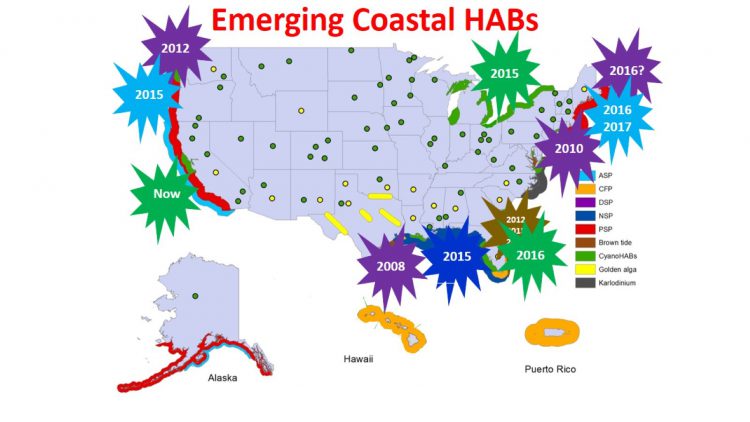On April 4, a Congressional Briefing held in Washington, DC, focused on harmful algal blooms (HABs) and their increasing impacts on coastal, Great Lakes, and inland communities and economies. NCCOS’s Quay Dortch, represented NOAA as a featured panelist, discussing the growing problem of marine HABs and the threat posed by freshwater HABs (i.e., cyanobacteria or blue-green algae) invading estuaries and coastal oceans.
With HABs being reported in every state, U. S. Representatives Marcy Kaptur (OH-9) and David Joyce (OH-14) sponsored a congressional briefing at the Rayburn House Office Building with the U.S. Geological Survey (USGS) and NOAA titled Unfriendly Blooms: How Harmful Algal Blooms Threaten Life and the Economy. Among the other panelists with Dr. Dortch were moderator Rob Renner (Water Resource Foundation – public utility perspective), Jennifer Graham (USGS – inland HABs), and Keith Cartnick (SUEZ North America – private utility perspective). Over 30 congressional staffers attended, in addition to representatives from science organizations and federal agencies (including NOAA).
The panel, organized by USGS, highlighted numerous issues and agency efforts:
- Importance of HABs and their health impacts to water utilities;
- Impacts of HABs on all waterways (including coastal waters) at all scales;
- Differences between HAB appearance and impacts; and
- Use of multiple approaches by USGS and NOAA to understand causes and effects of HABs and to inform management.

Recent major coastal harmful algal blooms in the U.S. (Credit: Q. Dortch, NOAA)
Dr. Dortch noted the new emerging problem of cyanobacterial HAB toxins coming from freshwater into coastal zones where they accumulate in shellfish and may represent a threat to human health. As blooms increase in inland waters, they may extend to marine waters. NCCOS is assessing the magnitude this problem, for example, in California in collaboration with the USGS and the Environmental Protection Agency (EPA).
The briefing highlighted NOAA’s actions regarding HABs and its collaborations with other agencies to forecast, monitor, and respond to HABs (e.g., USGS, EPA, and the Food and Drug Administration). Attendees’ comments included appreciation for the work of NOAA and USGS, concerns about proposed federal spending reductions, and how federal agencies coordinate and work together.
For more information, contact Quay.Dortch@noaa.gov.
